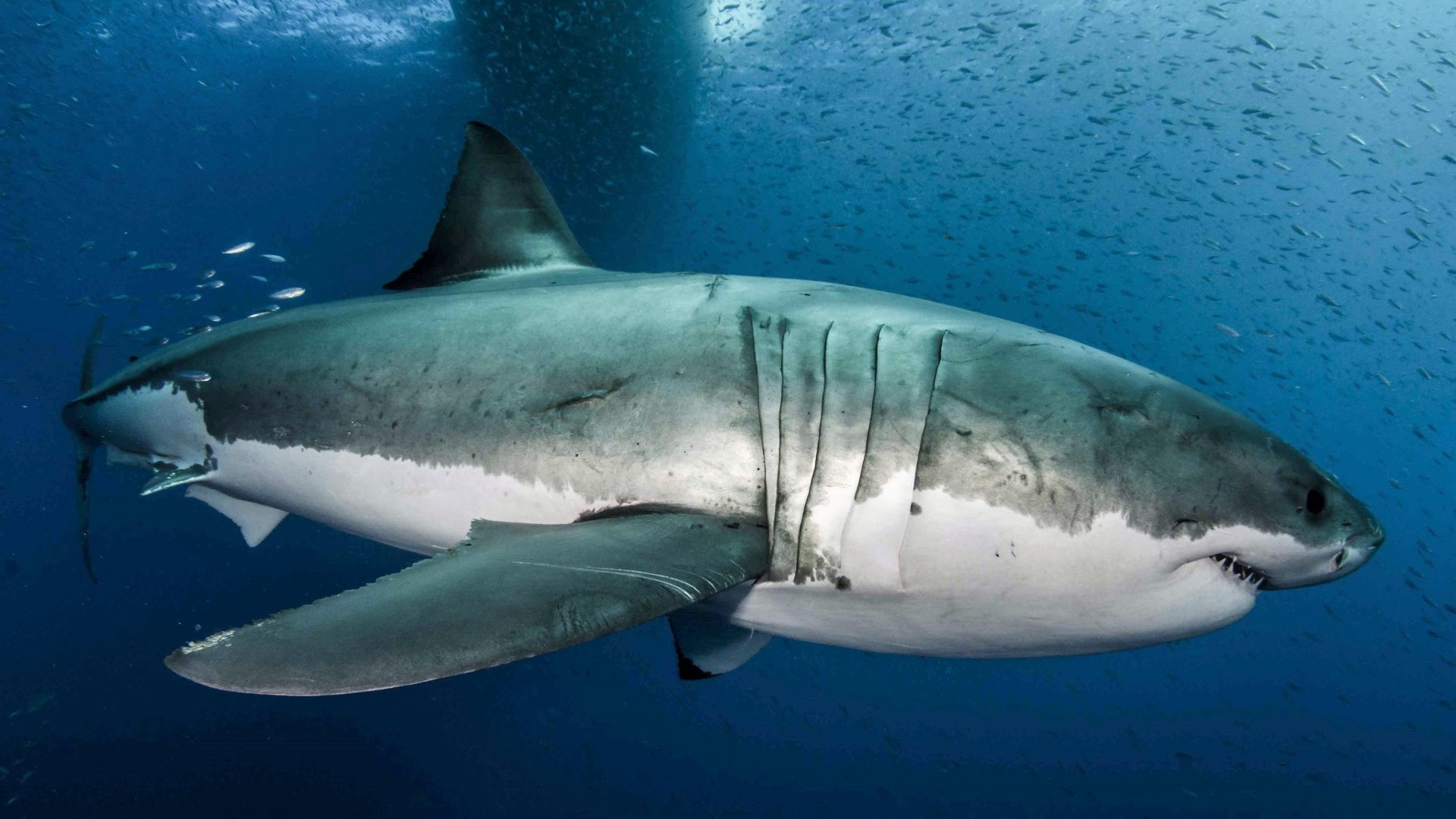The genome of the great white shark shows how it uniquely evolved to be a survivor
There are many reasons great white sharks have been around for 400 million years. For one, they’re 11-to-20-foot long apex predators with an endless supply of jagged teeth. New research shows that superior healing abilities may have also lent a hand (er, fin) to great white sharks’ long-term survival. And the genes that gave them these abilities, the researchers believe, could one day help fight cancers and age-related diseases in humans.


There are many reasons great white sharks have been around for 400 million years. For one, they’re 11-to-20-foot long apex predators with an endless supply of jagged teeth. New research shows that superior healing abilities may have also lent a hand (er, fin) to great white sharks’ long-term survival. And the genes that gave them these abilities, the researchers believe, could one day help fight cancers and age-related diseases in humans.
A team of scientists collected DNA from one great white shark found off the coast of Delaware, and one off the coast of California. They combined these two DNA samples to create a hybrid version of an entire great white shark genome (paywall), which had never been assembled before.
Great whites have giant genomes, with 41 pairs of chromosomes made up of over 4.6 billion base pairs of DNA. For comparison, we have 23 pairs of chromosomes with about 3 billion base pairs. Within this huge amount of genetic code, the team noticed that great white sharks an unusually large number (for a fish species) of patches of DNA called long interspersed nuclear elements, or LINEs. These are stretches of code that can appear in different locations throughout the genome, and work to generate more genetic diversity over time as cells reproduce—a healthy quality in terms of evolution.
The flip side of LINEs is that they also introduce more opportunities for mistakes during the DNA replication process. High levels of LINEs within a large genome within a huge number of cells in their massive bodies would theoretically put great white sharks at a higher risk of developing cancers as a result of genetic copying mistakes. That risk is compounded by the relatively long lifespan—70 years—of great whites. Indeed, great whites are one of some 22 species species of shark that have been spotted with tumors. Yet great white sharks have a cancer rate that is lower than expected based on their size, longevity, and genetic makeup.
The team believes this is because great white shark DNA contains several tools that can accelerate healing. Some of the genes the study found help blood clot and flesh regrow, Wired reports. Others help heal DNA within individual cells avoid copy-related errors, by acting as stabilizers during the copying process, or by suppressing tumors.
Mahmood Shivji, a marine biologist at Nova Southeastern University in Florida and one of the lead authors of the paper, says that these super-healing genes may have clinical applications in the future. “There’s still tons to be learned from these evolutionary marvels, including information that will potentially be useful to fight cancer and age-related diseases, and improve wound healing treatments in humans, as we uncover how these animals do it,” he said in a statement.